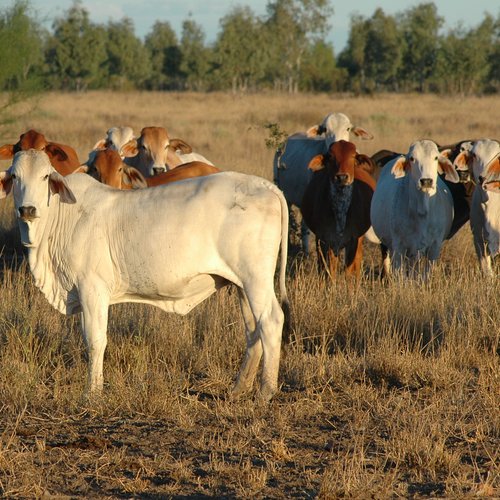According to WeedSmart, industry sources estimate that around 70 per cent of grain production businesses in Queensland and northern NSW either own or use a contractor with an optical spot sprayer.
It says adoption of this technology in Australia’s southern and western growing regions currently sits at around 25 to 30 per cent of farms, in line with the increasing emphasis on summer weed control in these regions.
Optical spot sprayer technology (OSST) helps growers implement the WeedSmart Big 6 tactics, such as applying the double knock to protect widely used herbicides such as glyphosate and Group 1 [A] herbicides, making it economical to spray more often to target small weeds, stopping seed set and increasing the options to mix and rotate herbicide modes of action.
The WeedSmart Big 6 is an integrated weed management program that growers can apply across all cropping systems. A diverse approach that includes several chemical and non-chemical tactics places downward pressure on the weed seed bank and reduces herbicide resistance risk.
Until recently, only 2,4-D, paraquat, glufosinate and glyphosate were registered for use through optical spot sprayers.
Increasingly widespread use of OSST has prompted a flush of new registrations and permits for a wide range of herbicides and use patterns. The new registrations and permit allow the use of many different knock-down and residual modes of action, making it possible to mix and rotate fallow weed control chemicals.
Nufarm has led the way with new registrations for OSST rates for nine of their key herbicides – Dropzone (2,4-D with Droplet Optimization Technology), Biffo (glufosinate-ammonium), Crucial (Triple Salt Advanced Technology glyphosate), Trooper 75-D* (2,4-D + picloram), Weedmaster DST (Dual Salt Technology Glyphosate), Terrad’or (tiafenacil), Amicide Advance 700* (2,4-D), Amitrole T (amitrole + ammonium thiocyanate) and Comet 400 (fluroxypyr).
The APVMA has also issued a minor use permit (MUP) for new optical spot sprayer herbicide rates for another 15 herbicides from Corteva, Sipcam, Arysta, Nufarm, Shandong Rainbow, Syngenta, Sumitomo, Nutrien Ag Solutions and FMC Australasia.
This permit (PER90223) is for a various herbicides applied using optical camera spraying technology systems such as Weedseeker, WEED-IT, John Deere See & Spray, Bilberry and other emerging green-on-brown optical spray systems to enhance weed management in fallow situations. The permit is in place until 31 December 2026.
WeedSmart states that all registered products can be applied at broadacre rates through an optical sprayer if there is no specified OSST rate on the label. Always read and follow the label and permit directions carefully.
In addition to the nine Nufarm products with new rates for optical spot sprayer application, the APVMA permit provides higher rate options for various products for use in two scenarios.
Firstly, the application of short-duration residual herbicides butroxydim, clethodim, haloxyfop-R, fluazifop-P butyl ester, quizalofop-P-ethyl, sethoxydim, triclopyr ester and flumioxazin in situations where grass and broadleaf weed cover is up to 30 per cent of the field.
The second use pattern allows for higher rates of residual herbicides aminopyralid and picloram and triclopyr as the butoxyethyl ester, picloram and triclopyr as the butoxyethyl ester, metsulfuron-methyl and fluroxypyr methyl heptyl ester and aminopyralid where weed cover is up to 10 per cent of the field.
OSST vastly reduces the quantity of herbicide applied to cropping land in fallows whilst conserving moisture and nutrients. At densities of less than one weed per 10 square metres, the area sprayed with herbicides is 70 to 80 per cent less than when a blanket spray is applied.
This reduction in area treated allows growers to reduce the volume of herbicide and water used and makes it economical to include more expensive products within their chemical program.
WeedSmart says allowing weeds to grow in summer fallows negates much of the crop yield benefit from conservation farming practices. Transpiration by summer weeds is the only mechanism that can remove soil moisture, and reduce nitrogen mineralisation, to a depth of 1.2m or more.
The spread of difficult-to-control weeds such as feathertop Rhodes grass, fleabane and sowthistle into the southern and western growing regions is behind the increasing adoption of OSST beyond the northern region.
Optical spot sprayer technologies will again feature at the next WeedSmart Week event, scheduled for 1–3 August in Dubbo. Register early for this event and consider applying for a GRDC Study Tour grant.
Visit the WeedSmart website for more information about optical spot spraying technologies and the WeedSmart Big 6.
WeedSmart
‘WeedSmart’ is the industry voice delivering science-backed weed control solutions to enhance on-farm practices and promote the long term, sustainable use of herbicides in Australian agriculture.
WeedSmart has support from the GRDC, major herbicide, machinery and seed companies, and university and government research partners, all of whom have a stake in sustainable farming systems.




